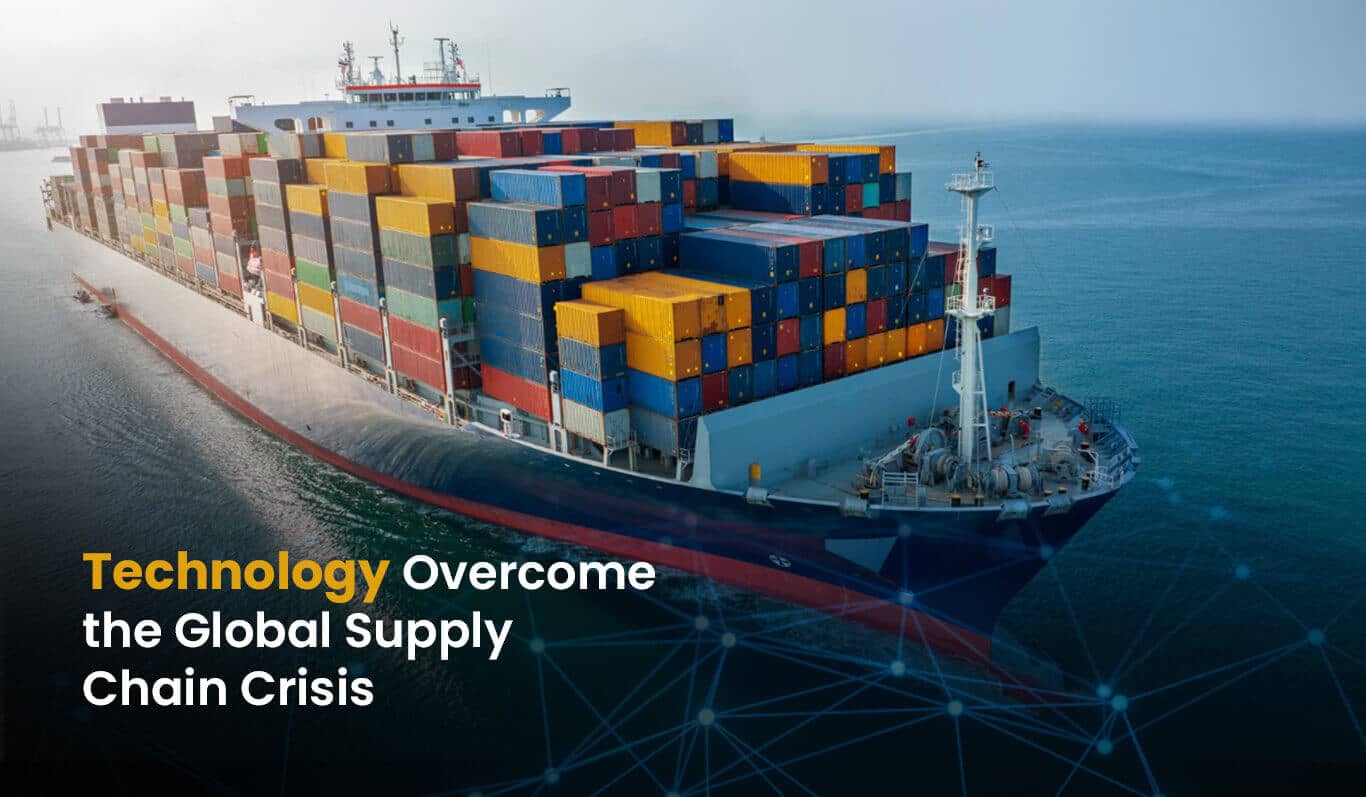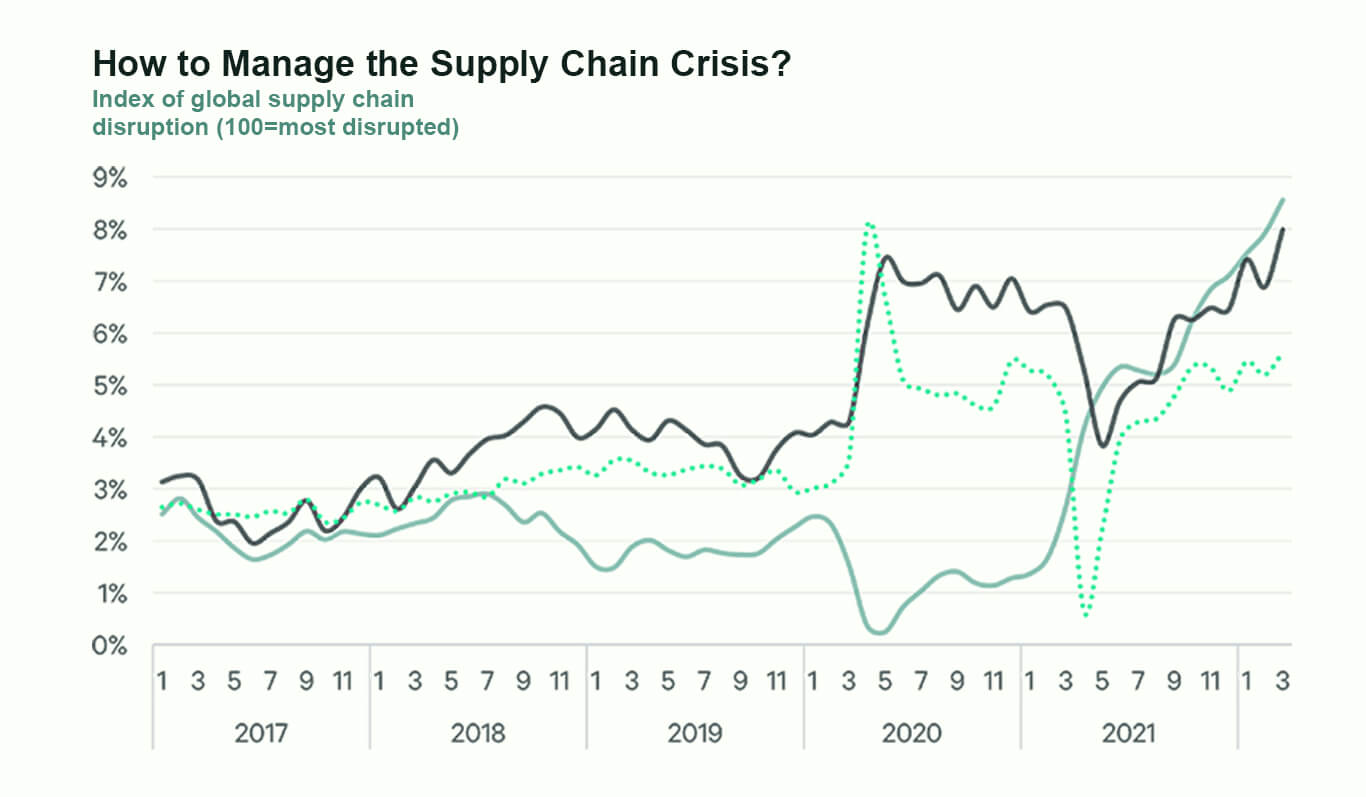How Can Technology Overcome the Global Supply Chain Crisis?

There have been many disruptions to supply chains over the past two years. A global supply chain delay, the covid pandemic, the Ukraine war, and resource shortages are all factors affecting supply chains.
Supply chain disruptions from abroad will still impact your customers, your business, and your supply chain regardless of your location. Supply chain disruptions can be caused by natural disasters, pandemics, or even political uncertainty. But the question is - How prepared are you for the next global supply chain disruption?
What Do You Need to Do to Manage the Supply Chain Crisis?

-
Evalute system performance. Are you having difficulty managing your current hardware and software? You need to be aware of which processes are performing well and which are cause for confusion. Chaos in software and hardware versions, operating systems, and hardware versions is a choking hazard for most companies.
-
Avoid downtime. All supply chain participants need devices that work efficiently without any downtime. It is essential that these devices are ruggedized in many cases in order to withstand extreme temperatures and drops in some cases. Without restrictions on how mobile devices can be used, users will end up using huge amounts of data and draining their batteries to zero at exactly the wrong time. EMM suppliers can help you fix connectivity issues.
-
Logistics management. Consider mobility in logistics as an integrated end-to-end solution and not just a series of siloed software products.
Here Are Six Marketing Strategies for Reviving Your Retail Business During a Recession
Implement an efficient marketing strategy to stay ahead
There's a natural tendency to reduce marketing and customer engagement budgets. Demand will pick up even though shoppers aren't spending much right now. Keep your brand front of mind to keep shoppers away from competitors. Make sure to engage with customers on different platforms and create online events to keep them in the loop. Also, highlight your brand's values and how they relate to your target segment.
Provide what your consumers want
Inflation-induced changes in spending habits and lifestyle choices are most likely to happen. It is important to stay up to date with what shoppers want. As inflation rises and consumers' buying behavior changes, brands have to change their product- and category-specific strategies regularly.
Offer customized promotions.
Offering the right discount based on purchase trends and preferences is more appropriate. Buying goals differ among consumers, so not every promotion converts them. A one-size-fits-all approach to promotions makes hardly any sense. By diversifying your marketing efforts based on real-time context, you can avoid overdelivering to interested buyers. Your budget can also be redirected toward those who require more encouragement to take action.
Evaluate and enhance operational efficiency.
If the economy is down for a prolonged period, you can better position your e-commerce brand by keeping operations lean. Using user data and external trends to predict demand and manage the supply chain can maximize operations. Additionally, you can manage SKUs more efficiently and optimize product specifications, as well as develop self-service solutions like chatbots and FAQs.
Engage with customers at all touch points to increase trust.
Physical presence and the personal touch of in-store staff can be helpful in establishing trust and inducing a user to make a purchase. But in a digital retail environment, it is vital to nurture their shopping journey with trust at every touch point. For instance, if you detect that some users seem to be spending too much time on a product page, you can trigger chatbots to help them or highlight ongoing promotions and free shipping options.
Utilize analytics to drive decisions.
The ability to manage multiple data points from various sources can lead to valuable shopping experiences that your customers will appreciate. It allows you to get real-time insights into customer journey data, enabling you to optimize workflows and promote efficiency.
How technology can overcome global supply chain challenges?

Internet of Things. For supply chain companies, the IoT is a major lifeline as it creates a platform for other innovations, such as AI and ML. Devices connected through IoT services provide real-time data, facilitate centralized management, and ensure smooth connectivity between devices. A variety of devices are used by businesses to keep track of grocery storage, weather, traffic conditions, vehicles' performance, etc. Their ability to make quick decisions was facilitated by accurate information available at all times. In the era of Internet of Things, businesses can manage their supply chain more effectively and respond to challenges more quickly.
Predictive Analytics. Data gathered by IoT devices is essential for predictive analytics in the supply chain industry. To get accurate predictions, companies can build a software ecosystem within their company to process terabytes of data. The use of predictive analytics in the supply chain allows for the resolution of issues before they arise. With this method, enterprises can anticipate and prepare for eventualities such as knowing which vehicle needs repair or what weather conditions to expect, etc. Knowing what action path to follow allows companies to adjust their decisions as necessary. As a result, businesses are better prepared to face any crises.
Digital Twin. As digital twins improve situational awareness, supply chains can take informed decisions more quickly and accurately with improved speed and accuracy. Digital twins were valued at $6.5 billion in 2021, but are projected to reach $125.7 billion by 2030. IoT also played a role in this innovation. Using data collected from connected devices, enterprises can see the bigger picture and recreate routes, employees, and supply chain processes precisely and dynamically. Supply chain transparency is ensured by the digital twin. It is possible to validate ideas without taking any risks using prototypes of real processes. Business and management processes in supply chains can be optimized by digital twins.
Machine Learning. In supply chain businesses, machine learning (ML) helps them make their equipment smarter and more responsive. As well as ensuring the quality of the goods, ML also enables faster shipping. The supply chain can benefit from machine learning by offering: Quality assurance. Human error is reduced through the use of intelligent hardware to reduce manual work. Machines with image recognition capabilities carry out quality checks. As a result, it assists companies in fulfilling their delivery obligations as part of their partnership agreements.
Fraud detection. By analyzing real-time data and applying relevant algorithms, devices can identify deviations in supply chain processes. With ML, goods can be tracked from start to finish, including their movement, location, and storage. It helps businesses prevent fraud as well as deliver items of the right quality and quantity.
Overcome any last-mile challenges. In general, companies always incur the highest costs when it comes to last-mile delivery. It is necessary to ensure this in order to retain them and to provide a great customer service experience. By analyzing delivery addresses and optimizing routes, organizations can achieve timely shipping and reduce costs.
Conclusion
Global supply chains are becoming more resilient thanks to technological advancements. Ultimately, this should increase customer satisfaction and sales by helping businesses manage their complexities better. The use of cutting-edge technologies, including artificial intelligence (AI), machine learning (ML), 5G connectivity, the internet of things (IoT), cloud computing, big data analytics, smart sensors, cyber-physical systems, virtual reality, manufacturing execution systems, and blockchains, has revolutionized the industry. There is a growing awareness of the changing environment in which supply chains operate by companies. Businesses need to evolve if they hope to survive the severe problems faced by global supply chains over the last few years.
FAQs
How can technology solve supply chain problems?
Using technologies like artificial intelligence, predictive analytics, and machine learning in supply chain management and logistics, companies are automating warehouse operations, improving delivery times, managing inventory proactively, enhancing sourcing relationships, and creating new experiences through automation.
How can mobile technology help restore normalcy to the supply chain?
- Forecasting: AI and machine learning can be used to improve inventory recommendations and distribution strategies.
- Sustainability: From tire pressure to fuel efficiency, trucks can be monitored by sensors, and maintenance can be scheduled in advance using automation.
- Quickly onboarding talent: Push learning content onto remote devices via Enterprise Mobility Management (EMM) or apps.
- Mobile barcoding and 3D printing
How advancements in supply chain technology are improving logistics?
Technological advancements in the supply chain are designed to ensure supply chain resilience so that e-commerce brands can easily adapt to changes as the industry grows.
- By connecting all sales channels and distribution centers, we can forecast future demand.
- Automated on-demand delivery powered by AI, robotics, and other technologies.
- Reduced human error rates by cutting out time-consuming, manual tasks.
- Inventory levels are accurately and transparently monireal-timereal time.
- By automating shipping, you can put orders in a queue and eliminate some manual work.
Request a Quote
Categories
Popular posts
Best Practices for Software Product Engineering Every CTO Should Implement
2023-14-18How to Build Your Own On-Demand Carpooling App Services?
2023-08-25How to Start an On-Demand Fuel Delivery Business: A Comprehensive Guide
2023-07-28Empowering Miners: How Fleet Management Apps are Transforming the Mining Industry?
2023-07-21A Complete Guide to Develop a Food Delivery App for Restaurants in 2023
2023-07-08Mobile Apps Transforming the Travel Industry: A Game-Changer in Travel Planning and Experience
2023-07-07
